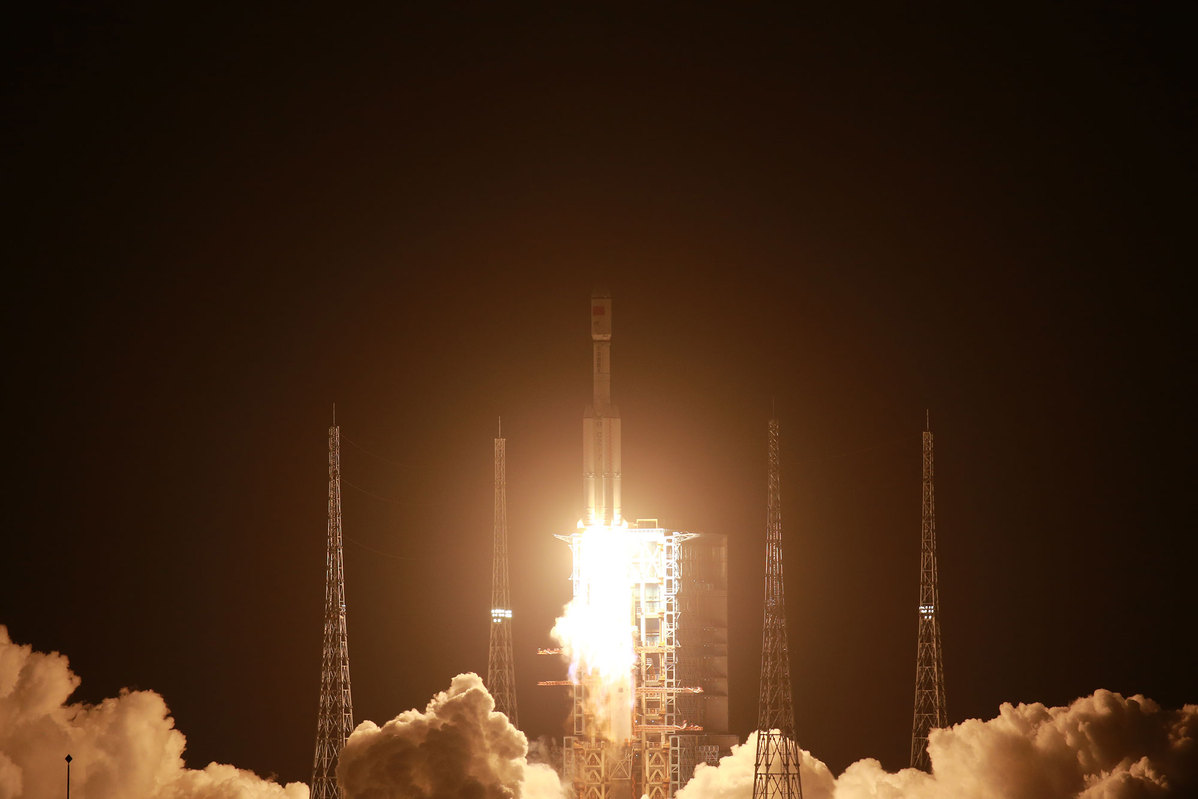Tianzhou spacecraft launches, heads to space station


China's most adventurous space endeavor, Tiangong, or Heavenly Palace, will consist of three main components — a core module attached to two space labs — with a combined weight of nearly 70 metric tons. The entire station is set to work for about 15 years, mission planners have said.
Tianzhou 2's predecessor, Tianzhou 1, was China's biggest spacecraft when it entered service and was launched at the Wenchang launch center in April 2017.
It carried out several docking and in-orbit refueling maneuvers with a Chinese space laboratory in a low-Earth orbit from April to September that year, making China the third nation capable of in-orbit refueling, after the former Soviet Union and the United States.
The world's first operational cargo spacecraft, Progress 7K-TG, was developed and launched by the Soviet Union in 1978. This type of transport vehicle conducted 43 cargo flights before being retired in 1990.
More than 200 cargo vehicles have been sent to deliver supplies to space stations. Currently, four models are in service - China's Tianzhou, Russia's Progress-MS and the US' Cargo Dragon and Cygnus.
























